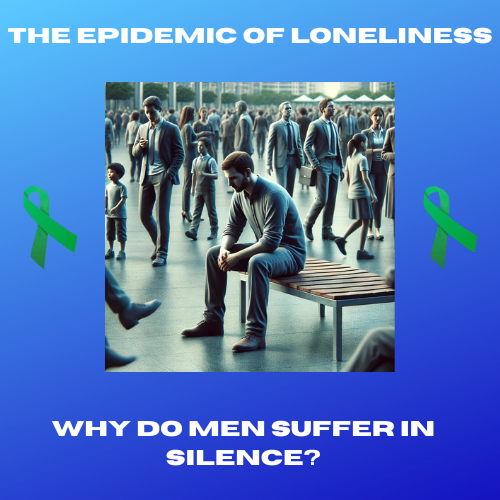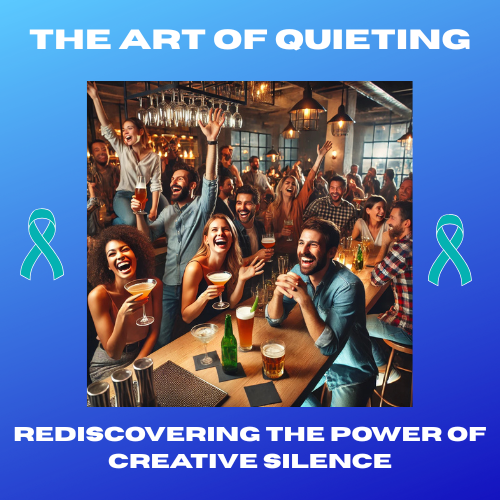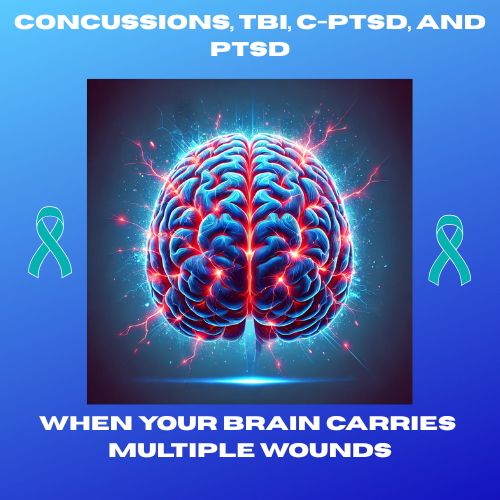The Hidden effects of Weak Leadership
Is it the Egg or the Emperor?
It’s the age-old riddle reimagined: Who came first, the toxic leader or the toxic corporation?
Was it the executive with a fragile ego, building empires on fear and favoritism, who poisoned the culture from the top down?
Or was it the system itself, forged in profit over people, that shaped a leader into a tyrant to survive? Like a snake eating its tail, toxicity in leadership and corporate culture becomes a self-perpetuating cycle, each feeding the other and justifying each other’s existence.
One day, the hopeful manager walks in, full of ideals and empathy. A year later, they’re unrecognizable, guarded, suspicious, mimicking the very cruelty they once swore to change. Or perhaps it was the cold boardroom from the beginning, recruiting not the best, but the boldest, most obedient shadows of power.
In reality, both stem from the same source: insecurity. The insecure leader builds walls. The insecure system rewards those who reinforce it. The organization's soul, along with the people who once believed it could be different, disappears somewhere in that maze.
So the question remains, not who came first, but who will break the cycle?
That’s the real revolution.
The Epidemic of Institutional Toxicity
We live in an era where chaos has become the norm, where uncertainty permeates every corner of society, and where leaders at every level of corporate boardrooms, government agencies, and nonprofit organizations have adopted a brutal philosophy: the mission is sacred, people are expendable. This workplace dysfunction is no longer isolated; it has spread like a systemic cancer, affecting institutions worldwide. Organizations have transformed into anxiety-inducing environments, treating employees as mere components in a system that prioritizes productivity over human well-being.
The message is unambiguous and direct: either adjust to our toxicity or depart. Don't like the impossible deadlines, the emotional abuse disguised as "high standards," or the constant threat of replacement?
The opportunity to leave is always present.
This calculated indifference creates a perpetual state of insecurity that rewires the human nervous system for survival rather than growth. Employees develop hypervigilance, scanning for threats that may never come while simultaneously bracing for the ones that inevitably will.
As a result, the workforce experiences psychological anxiety, with PTSD symptoms, flashbacks to humiliating meetings, nightmares about performance reviews, and panic attacks triggered by email notifications becoming as commonplace as coffee breaks. When entire organizations operate from this place of manufactured crisis and manufactured expendability, they don't just create toxic workplaces; they create traumatized societies where people forget what it feels like to be valued, to be safe, and to be human.
The Daily Trauma of Working Under Threat-Based Leadership
Each morning, you arrive at work with a knotted stomach, scanning the hallway for indications of your leader's mood. Will today bring the cold shoulder of indifference, the explosion of criticism, or the suffocating attention reserved for the chosen few?
Your body remembers what your mind tries to forget: the way your chest tightens when their name appears in your inbox, the way your hands shake during meetings, and the sleepless nights replaying conversations that left you questioning your worth.
The issue isn't just workplace stress. This is trauma in a suit and tie, administered daily by those who should be lifting you up but instead tear you down. Weak, insecure leaders don't just create challenging work environments; they create psychological battlegrounds where employees develop symptoms mirroring those of abuse survivors: hypervigilance, emotional dysregulation, and a fractured sense of self.
The question isn't whether you're strong enough to handle it. The question is, how long can your nervous system endure living in a state of perpetual threat before it begins to break down?
More importantly, how do you protect what's left of your peace when the very person meant to guide you has become the source of your deepest wounds?
The Anatomy of Toxic Leadership
From a place of profound inner emptiness, insecure leaders lash out to protect themselves, much like wounded animals do.
They establish kingdoms based on favoritism, measuring loyalty not by competence but by their willingness to stroke fragile egos. You've seen them, the chosen ones who've mastered the art of strategic flattery, who mirror back the leader's opinions with religious devotion, who've learned that survival depends on becoming extensions of their leader's fractured self-image. (We see this today.)
These leaders don't see people; they see threats or tools. They weaponize information, withholding crucial details from some while sharing insider knowledge with others.
They create artificial scarcity of praise, of opportunities, and of basic human dignity because abundance would threaten their illusion of control. The workplace transforms into a courtroom, where you assume the roles of judge, jury, and defendant, with the uncertainty of which version of yourself will be accepted today.
The political atmosphere they cultivate is suffocating.
Colleagues become adversaries, vying for slivers of approval. Trust turns into an expensive luxury that no one can afford. To survive another day, you find yourself editing your words, measuring your expressions, and shrinking into a smaller version of yourself. The organization doesn't just enable this dysfunction; it rewards it, promoting those who've mastered the game while discarding those who refuse to play.
Breaking Point and Healing
The constant emotional unpredictability creates a state of chronic hypervigilance that rewires your nervous system.
You become an expert at reading micro-expressions, at detecting the subtle shift in tone that signals incoming danger. Your body exists in a perpetual state of fight-or-flight, with muscles tense, breath shallow, and your heart racing even during moments of supposed calm.
This hyperarousal doesn't end when you leave the office.
This hyperarousal accompanies you home, permeates your sleep, and imbues every interaction with suspicion and exhaustion. You develop complex PTSD, a condition where trauma isn't a single event but a series of relentless emotional assaults that reshape your understanding of safety, trust, and self-worth. Your nervous system, designed for short bursts of stress, begins to fracture under the weight of chronic activation.
The symptoms manifest in ways that feel both foreign and familiar: emotional flashbacks that leave you drowning in shame without understanding why, a harsh inner critic that echoes your leader's voice long after you've left their presence, and relationships that feel impossible to navigate because intimacy requires vulnerability you can no longer afford. You start to operate from a place of survival rather than authenticity, making you unfamiliar with yourself.
But here, in this place of breaking, something sacred begins to emerge. When you realize you cannot continue living this way, your lowest point transforms into a sacred place. The pain that once felt like evidence of your weakness becomes the very thing that drives you toward healing. You begin to reach out—tentatively at first—to others who understand the particular anguish of being slowly dismantled by someone who should have been safe.
The Journey Through Darkness
Recovery from toxic leadership trauma is not a linear path. It's a spiral staircase where you revisit the same wounds at deeper levels, each time with greater capacity for healing.
The work is brutally honest; you must mourn what was taken from you, not just what was done. You once possessed a natural confidence. The joy was effortless. The trust never felt perilous.
Support groups transform into havens where people finally witness and validate your experience. For the first time, you're not crazy, not oversensitive, not the problem. You're a survivor learning to reclaim your voice in a world that tried to silence it.
Professional counselors who understand trauma help you untangle the complex web of self-blame and shame that toxic leaders weave around their victims.
You learn that healing isn't about forgetting or forgiving too quickly; it's about integrating the experience in a way that honors your pain while refusing to let it define your future. You discover that your sensitivity, the very trait that made you vulnerable to abuse, is also your greatest strength. It's the source of your empathy, your intuition, and your ability to connect deeply with others who have walked similar paths.
The journey requires patience with yourself as you rebuild yourself from the ground up. On certain days, you are filled with strength and prepared to face the world. On other days, you find yourself scouring rooms for emotional traps, as your body recollects the trauma your mind has diligently worked to heal. We expect such behavior. Such behavior is part of the process.
This is how nervous systems learn to trust again.
Redemption and Hope
"He heals the brokenhearted and binds up their wounds" (Psalm 147:3).
These words aren't empty comfort; they're a promise carved into the very fabric of creation. Your story doesn't end with the wounds inflicted by those who should have known better. It ends with redemption, with the slow, sacred work of becoming whole again.
As the world around us seems to crumble, institutions failing, leaders falling, and systems collapsing, you might feel like you're watching civilization itself unravel.
But here's what toxic leaders and corrupt systems don't understand:
Destruction creates space for creation.
When old structures fall apart, they make room for something entirely new to emerge. And you, in your healing journey, are part of that creative revolution.
Jesus understands both the particular pain of toxic leadership and the chaos of a world in upheaval. He lived through the collapse of religious systems, the brutality of political oppression, and the betrayal of those closest to him.
Yet he didn't respond with despair or withdrawal. Instead, He became the ultimate creative solution—transforming suffering into redemption, death into life, and endings into beginnings.
"For I am about to do something new. See, I have already begun! Do you not see it? I will make a pathway through the wilderness. I will create rivers in the dry wasteland" (Isaiah 43:19).
This verse isn't just ancient poetry; it's your manifesto for creative survival in a broken world. When toxic systems block traditional paths, you learn to carve new ones. When conventional wisdom fails, you tap into divine wisdom. When institutions crumble, you become a builder of something better.
"Come to me, all you who are weary and burdened, and I will give you rest" (Matthew 11:28).
This invitation isn't passive; it's revolutionary. It's Jesus saying that in a world obsessed with productivity and performance, you can find a different way of being. This approach prioritizes your humanity over your output, your heart over your efficiency, and your soul over your contribution to damaged systems.
The Creative Solutions Manifesto for Surviving Toxic Leadership begins with this radical truth:
You are not required to participate in your diminishment. You can create micro-sanctuaries within hostile environments. You can build networks of mutual support that bypass toxic hierarchies. You can develop exit strategies that honor both your survival and your values. You can become the leader you wished you had, even if it's only for yourself at first.
Your healing becomes a form of creative resistance against systems designed to break you. Every boundary you set, every truth you speak, and every moment you choose self-compassion over self-destruction is an act of revolution.
You're not just surviving; you're modeling what healthy leadership looks like in a world that has forgotten.
The person emerging from this crucible carries something precious: the blueprint for what organizations could become if they were built on love instead of fear, on empowerment instead of control, and on creativity instead of compliance. Your scars serve as your credentials for constructing something beautiful from the debris of destruction.
Practical Steps for Protection and Healing
Document Everything: Keep detailed records of interactions, decisions, and communications. This strategy isn't paranoia—it's a form of protection. Toxic leaders often gaslight their victims, making them question their perceptions. Written records serve as anchors to reality. The HR department is not there to protect you; it exists to protect the company from you and your complaints.
Establish Boundaries: You cannot control their behavior, but you can control your response. Limit unnecessary interactions, communicate primarily through email when possible, and refuse to engage in conversations that feel emotionally unsafe.
Build a Support Network: Find people who understand your experience, whether through professional counseling, support groups, or trusted friends. Trauma's greatest ally is isolation, while healing's greatest ally is connection.
Practice Grounding Techniques: Breathe deeply, feel your feet on the ground, and name five things you can see when your nervous system activates. These simple practices help regulate your stress response and remind your body that you're safe in this moment.
Protect Your Identity: Don't let their perception of you become your reality. Remember who you were before this, who you are outside of work, and who you're becoming.
Plan Your Exit Strategy: Sometimes, the most loving thing you can do for yourself is leave. If the toxicity is severe and systemic, it may be wise to start considering your departure. Your mental health is worth more than any paycheck.
You are not irreparably damaged. You are not alone in this journey.
The pain you've endured is real, but it doesn't have the final word. Your story is still being written, and the pen is in your hands now.
If you're ready to embark on the journey from survival to healing, from trauma to transformation, know that hope is not just possible; it's inevitable for those who refuse to give up on themselves.
The same God is writing your story of redemption, the God who brings beauty from ashes, who turns mourning into dancing, and who makes all things new.
You are seen. You are valued. And you will be okay.
2025 © www.soundthetrumpet.org









